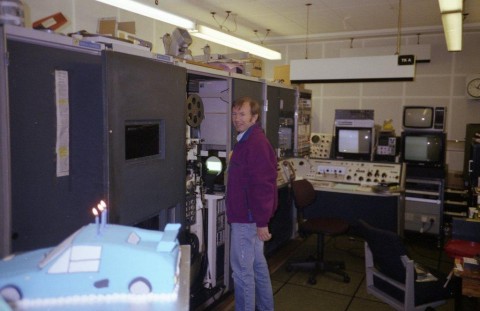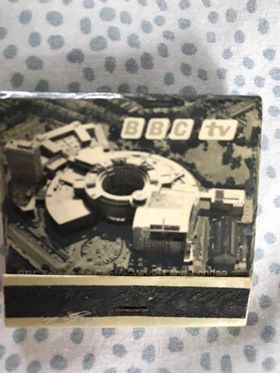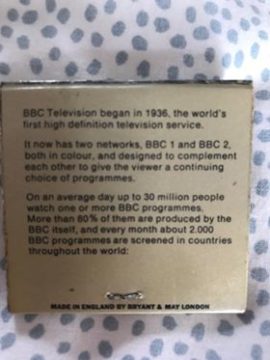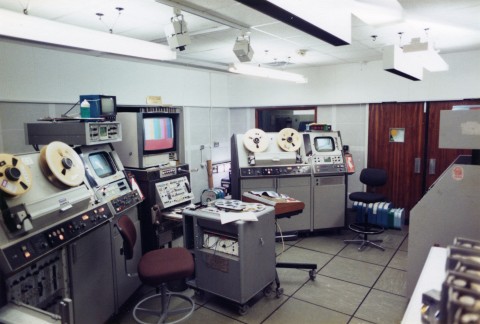
Jim Gregory in TK
I worked in TK for around a year and a half before moving to VT for a brief attachment. I had further subsequent spells in TK, later in my career, including one period where I refurbished every board in the machines, as by that stage some components, mainly the trimmers, were completely worn out. The maintenance budget took a big hit that year, but the machine reliability improved no end.
In the early days TK had regular bookings for ‘Pebble Mill at One’, ‘Midlands Today’, ‘Farming’ (The predecessor of Countryfile), ‘Asian Programme’ inserts, Studio A inserts for various network dramas, and from time to time film inserts to ‘Nationwide’ and other London News items.
I remember one day in I think the summer of 1975, Jim Gregory and I viewing a film trailer for what was expected to be a big series of films. There was an item in a programme about George Lucas, and his vision for the films, the trailer was from “Star Wars” (although I’m not sure it was known as such at the time). It did eventually become a whole series of films, but after the initial “Star Wars” was released in 1977 there was a long period of uncertainty, regarding the rest.
Jim Gregory and Paul Richards pretty much were TK, for most of the time I worked at Pebble Mill. Graham Winter went on to lecture at Wood Norton, and everyone else moved round various places. I remember the time with affection, and was quite sad to see the old Cintel TK’s finally removed to make way for new equipment, something I was involved in as a member of Post Production Maintenance in the 90’s.
R. G. Lee
The following comments were left on the Pebble Mill Facebook Group:
Keith Brook: ‘This is a rare shot indeed. Jim Gregory out of his chair!!’
Pete Simpkin: ‘Fascinating stories of TK. I was at Evesham with Jim in the 60s. I remember in a previous job in regional TK in Southampton waiting to send a commag news story to AP for the new BBC 2 News and after a very long wait eventually getting through to VT there who were going to tape it and the operator said something like ‘Hang on there’s a lot of noise ouside in the corridor, I’ll just shut the door’, we sent the package up OK and when he came back on to say all was OK he told us that TVC and all TV had crashed due to the major power failure in London which eventually led to the abandonment ofhe opening of BBC 2 that night!’



